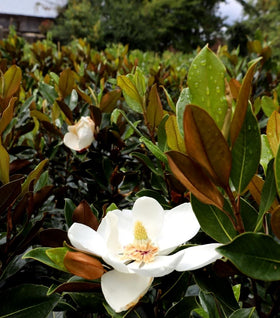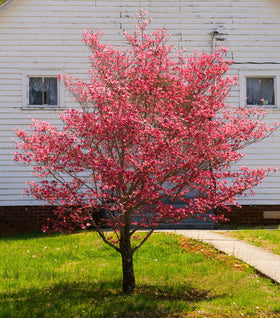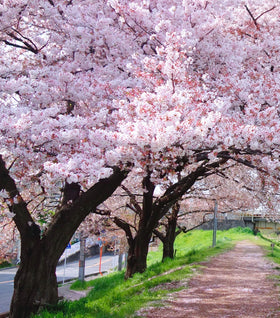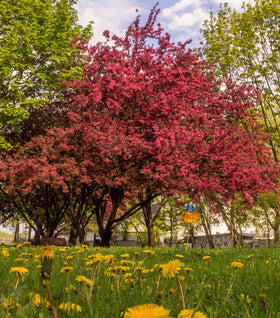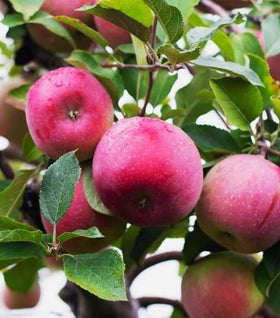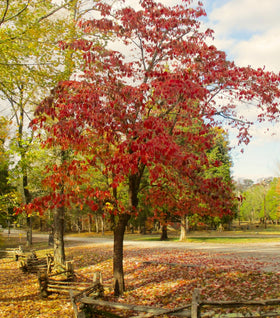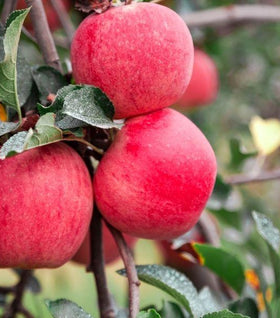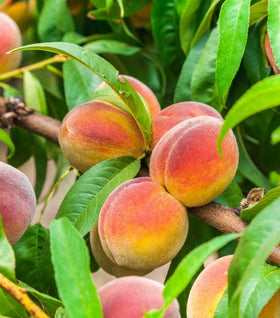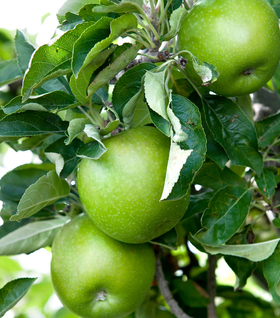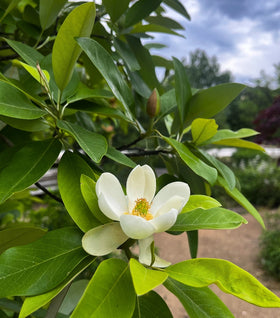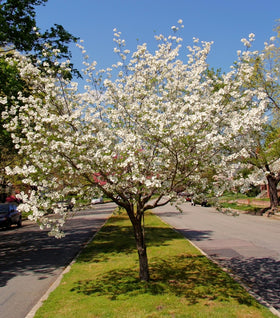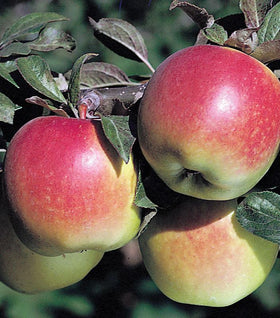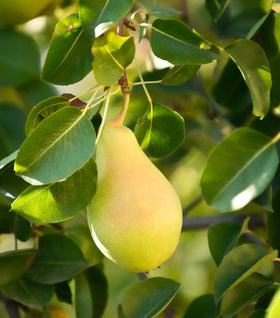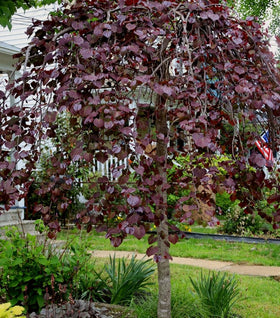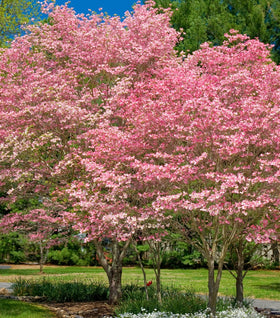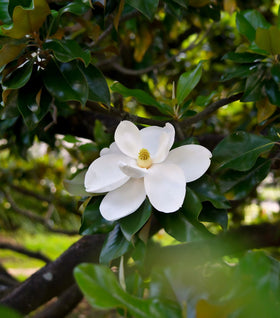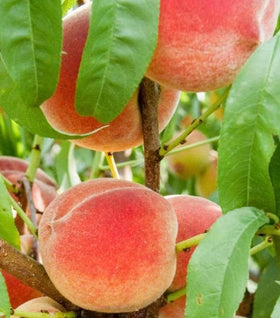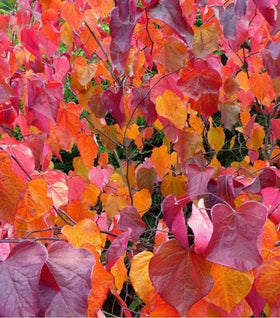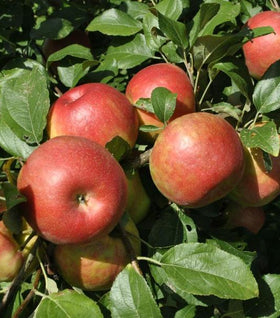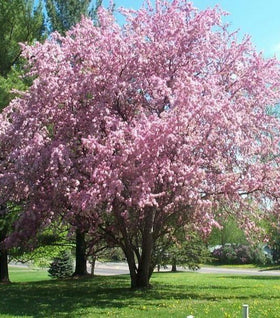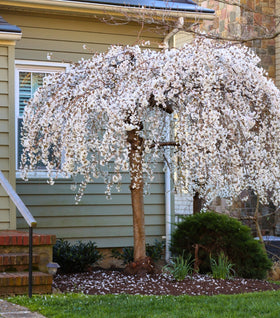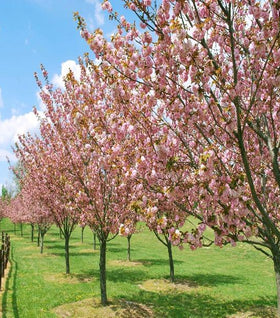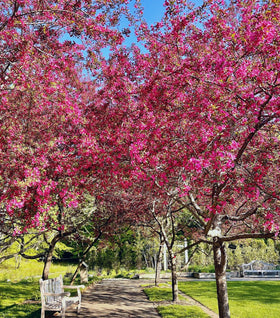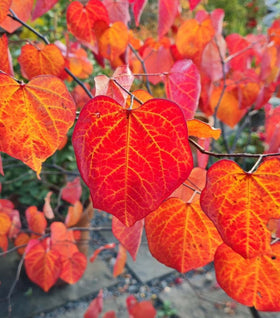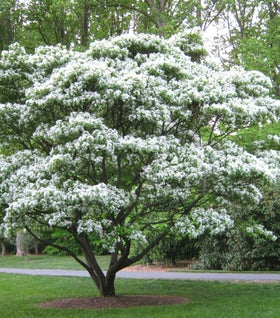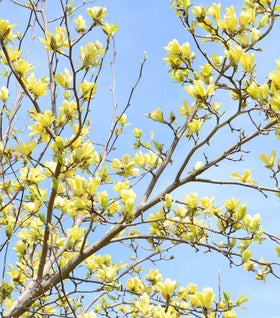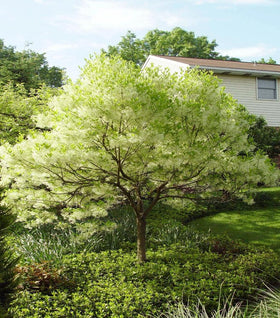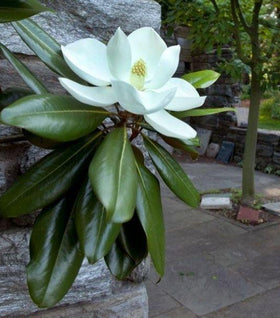Spring Blooming Trees
Spring Flowers Made Easy—Nursery-Grown Trees with Guaranteed Performance
Nothing jump-starts a landscape like spring blooming trees. From the frothy pinks of Cherry and Redbud to the classic elegance of Dogwood and Magnolia, these trees deliver instant curb appeal, pollinator activity, and a seasonal show that neighbors notice. We curate varieties for reliable bloom, regional adaptability, and strong structure, so the display you imagine is the display you get—year after year.
Every tree is nursery-grown and zone-tested, shipped fresh with clear guidance on sun, soil, spacing, and pruning. Whether you’re framing an entry, lining a drive, or anchoring a mixed border, our flowering selections are chosen for beauty, ease, and longevity—all backed by our "We Grow Together" Promise.
Bring your garden to life after winter with high-impact spring bloomers that set the tone for the season. Our lineup features Flowering Cherry, Eastern Redbud, Dogwood, Magnolia, Serviceberry, and more—each selected for color clarity, bud hardiness, and dependable flowering across U.S. zones. Many also offer fall color, fruit for birds, and attractive winter branching for four-season value.
Choose forms to match any space: upright, vase-shaped Redbuds for tight front yards; arching cherries for graceful allees; multi-stem Serviceberries for naturalized borders. Prefer a statement piece? Saucer and Star Magnolias deliver oversized, fragrant blooms that stop traffic.
We prioritize cultivars with clean foliage and resilient bloom cycles, thereby reducing disappointment from late frosts and variable spring weather. Look for product notes on chill hours, bloom window, and best pairings to extend color from early to late spring.
Growth Habits & Seasonal Interest
Spring bloom is the headline, but structure keeps the show going. Expect masses of early color, followed by fresh, healthy foliage and, in many cases, ornamental fruit that feeds wildlife. In autumn, many selections finish with scarlet, burgundy, or gold foliage, then reveal sculptural branching and bark through winter.
Habit matters for design balance. Redbuds tend to a rounded, vase form with manageable height—great near patios and paths. Flowering Cherries can be arching or upright, ideal for allees and focal points. Dogwoods layer horizontally with elegant tiered branching, while Magnolias often form bold, pyramidal or rounded silhouettes with large, fragrant tepals.
Performance is rooted in good genetics and culture. Our trees are selected to leaf cleanly, resist common issues, and bloom consistently once established—so your spring display isn’t a one-hit wonder.
Landscape Uses & Functional Benefits of Spring Flowering Trees
Use spring-flowering trees to frame entries, soften architecture, and draw sightlines through a garden. Plant a trio of Redbuds to create a color cloud at eye level, or flank a driveway with cherries to form a seasonal corridor. Dogwoods shine at woodland edges with dappled light, while Serviceberry bridges spring bloom to edible summer berries for songbirds.
Beyond beauty, these trees support pollinators at a critical early-season window. Pair with pollinator perennials and flowering shrubs to create nectar corridors and extend foraging from March through June. Many varieties also provide light summer shade that cools patios and reduces heat stress on underplantings.
For year-round structure, combine a spring bloomer with evergreen backdrops and fall-color partners (maples, black gum)—the result: seasonal continuity with a knockout spring peak.
Maintenance & Durability Advantages
Success starts with full sun to part sun (most bloom best with 6–8 hours or more) and well-drained soil. At planting, set the root flare at or slightly above grade, backfill with native soil, water thoroughly, and apply 2–3 inches of mulch (keep it away from the trunk). A soaker hose or drip line simplifies first-year establishment.
Prune lightly after bloom (for spring-flowering species) to fine-tune shape without sacrificing next year’s buds. Redbuds benefit from minimal structural pruning while young; cherries appreciate removal of crossing wood for airflow; dogwoods are best thinned sparingly. Feed in early spring with a balanced, slow-release fertilizer or top-dress with compost if growth appears sluggish.
Choose cultivars noted for disease resistance in your region and water at the base (not overhead) to keep foliage clean. With the right placement and minimal care, these trees provide decades of dependable bloom and low-maintenance upkeep.
Featured Spring Blooming Trees — Woodies Top 8 Picks
Yoshino Cherry (Prunus × yedoensis)
Iconic allée-maker with clouds of pale pink-to-white blossoms in early spring, light fragrance, and graceful branching. Fast-establishing, perfect for driveways and front-yard focal points; attracts pollinators and delivers soft summer shade.
‘Kwanzan’ Flowering Cherry (Prunus serrulata ‘Kanzan’)
Double, rose-pink pom-pom blooms create a showstopping canopy, followed by bronzy new foliage that matures to a green hue. The upright-vase habit is ideal for statement plantings, offering dependable blooms and high curb appeal with low upkeep.
Forest Pansy Redbud (Cercis canadensis)
Forest Pansy Redbud trees are prized for their vibrant burgundy-purple foliage and striking rose-purple spring flowers, offering multi-season interest in any garden.
Flowering Dogwood (Cornus florida)
Classic four-bracted “flowers” in white or pink, layered branching, and rich red fall color. A graceful understory tree for dappled light; supports wildlife with berries and offers four-season beauty from bloom to bark.
Later-spring flowers extend the season after C. florida, with starry white bracts, mottled bark, and strawberry-like fruit. Strong disease resistance, excellent in sun or part shade, and outstanding specimen structure.
Magnolia Jane (Magnolia liliflora 'Jane')
Huge, tulip-shaped blooms in shades of pink, white, and purple open before leaf-out for maximum drama. A bold focal tree with a rounded crown, fragrant flowers, and reliable performance in full sun.
Star Magnolia (Magnolia stellata)
Early, starry white blooms bring fragrance and brightness to the first warm days. Compact habit suits foundation beds and smaller gardens; superb near patios where you can enjoy the scent and close-up detail.
Allegheny Serviceberry (Amelanchier laevis)
Foamy white spring flowers, edible summer berries for people and birds, glowing orange-red fall color, and smooth gray bark for winter interest. Multi-stem form blends beautifully into naturalistic plantings and pollinator gardens.
Transform Your Yard This Spring with Easy, High-Impact Flowering Trees
Bring spring to life—beautifully and reliably. Our Spring Blooming Trees are nursery-grown for strong roots, dependable color, and low-maintenance performance, so the display you imagine is the one you get. From Yoshino and ‘Kwanzan’ Cherries to Redbud, Dogwood, Magnolia, and Serviceberry, each selection is curated for honest bloom windows, regional adaptability, and landscape impact. Whether you’re framing an entry, lining a drive, or anchoring a mixed border, these flowering trees deliver instant curb appeal, early pollen for pollinators, and four-season interest that holds up year after year.
Plant with confidence and enjoy the show. Match your site (full sun to part sun, well-drained soil), set the root flare at or slightly above grade, water deeply during establishment, and refresh mulch annually—simple steps for decades of color. Shop by bloom time, mature size, fragrance, or wildlife value to find the perfect fit, then check out with peace of mind: every order ships fast.


